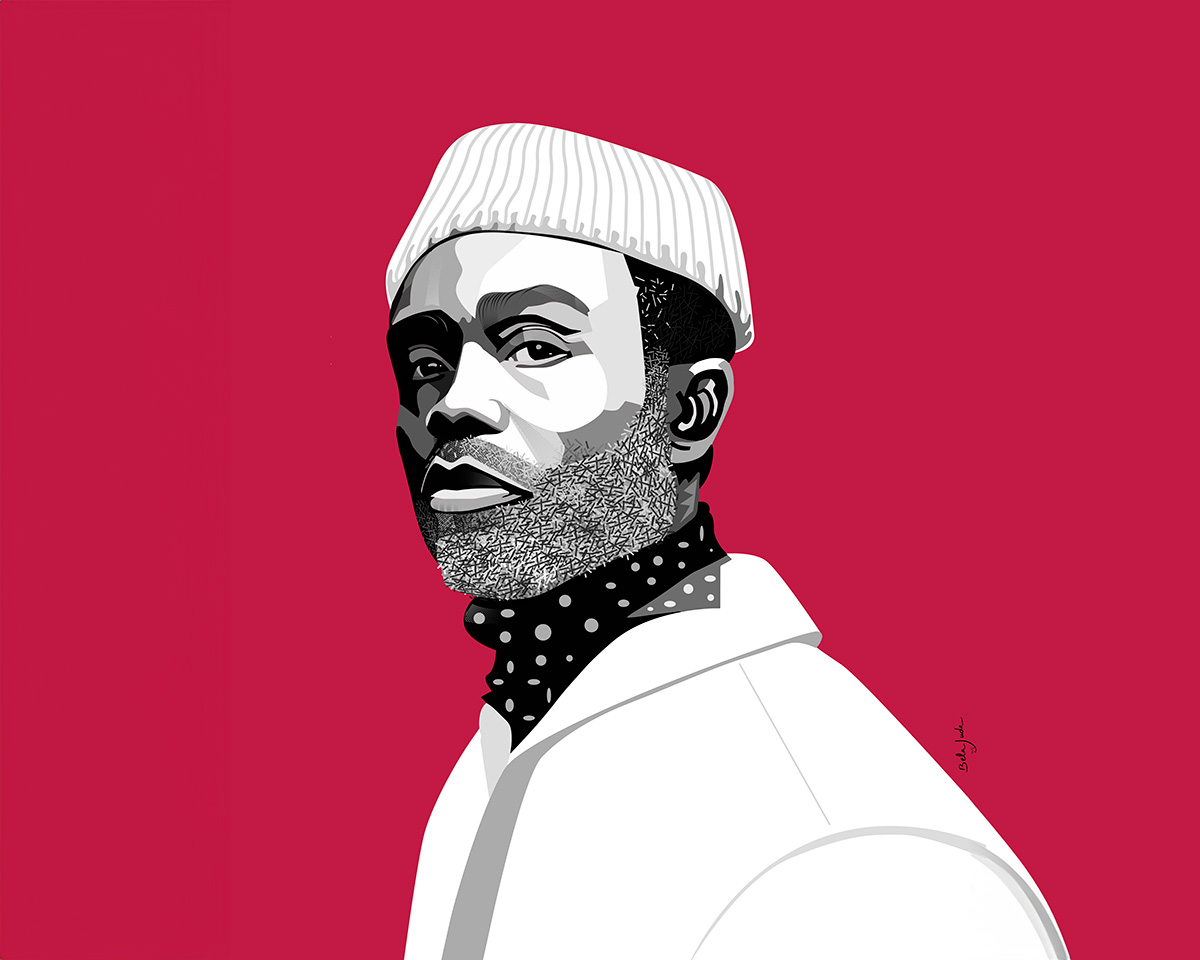FROM OUR JULY 2024 MR AWARDS ISSUE: OUIGI THEODORE, THE BROOKLYN CIRCUS: RETAIL BRAND OF THE YEAR

The entire MR team proudly presents our July 2024 MR Awards issue. If you haven’t received a hard copy, please page through a digital version at Issuu, and we’ll continue to post individual stories here on MR-mag.com. If you haven’t been getting MR in print, be sure that you are on our mailing list for future issues by completing this form.
Success, as officially defined in the Oxford dictionary, means “the accomplishment of an aim or purpose.” We prefer a different definition, one we discovered in writings by children with disabilities: “If you achieve what you want and are happy, that is success.” And to that, we add our own observation: the most successful people are those who follow their dreams and inspire others to follow their own. May dreams come true for MR’s innovative and intrepid 2024 honorees. May you keep on creating!
Ouigi Theodore might be the classic American success story: An immigrant (from Haiti), he lands in Brooklyn, New York, and works his way through public school and college. But his side hustle ultimately becomes his calling, as he goes on to have a national and global impact on his industry. The difference? Ouigi Theodore does it all in a way that is the very embodiment of cool, always anticipating what’s next for menswear, retailing, and culture in general.
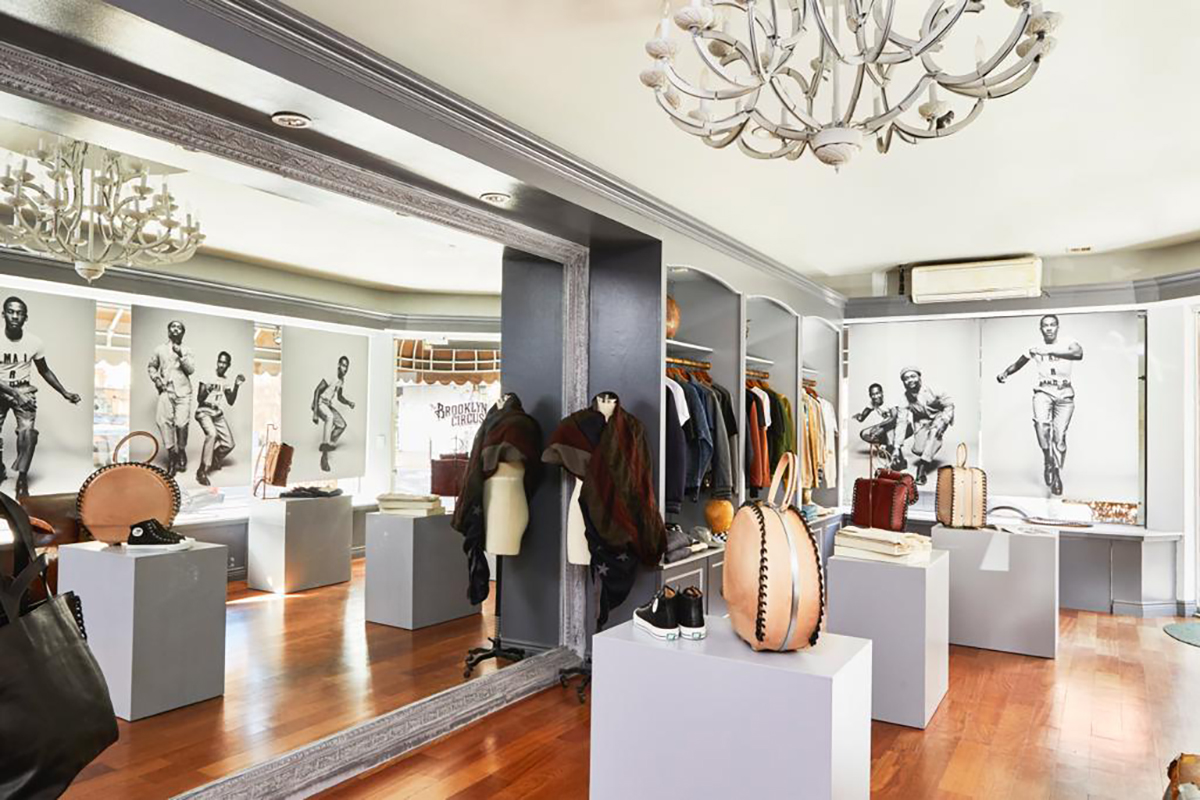
Retail is truly in Ouigi’s blood. His mother was involved in the import/export business, traveling the world from her native Haiti to buy and sell arts and crafts. She created what Ouigi calls the “Pop Shop” of her day (referring to artist Keith Haring’s boutique, which sold novelty items and art). The family moved from Haiti to Brooklyn, New York, eventually settling in Crown Heights. After attending New York City’s bilingual P.S. 189, Ouigi became a communications major at New York City’s renowned public high school, Brooklyn Tech. Moving on to Long Island’s Stony Brook University, he first majored in religion and linguistics, atypical for most of us in the fashion business.
“It was because of my Haitian roots and spirituality,” he explains.
After taking an African studies class, though, he recognized his love for storytelling—clearly apparent in his approach to retail—and became a history major.
“When I came out with my history degree, my grandmother asked, ‘So what are you?’ I said, ‘A historian!’ To which she replied, ‘Yes, but what are you?”

As fate would have it, while Ouigi was in college, he minored in “party,” but with a much more focused, entrepreneurial spirit than many of us. He and his friends would create fashion-themed events hosted in remote locations. He then decided to take some graphics classes at the Fashion Institute of Technology to support his pursuits. He eventually parlayed a passion for motorcycles into a moto-themed apparel collection called Ramsay Racing and opened a store called One Race, where he sold the collection and also carried denim brands like Seven and Chip & Pepper. “In 2005, my business partners and I decided to go our separate ways. I wanted to give retail another shot, but this time, I wanted to make it more of a concept shop than a multi-branded boutique.” Ouigi found a perfect location on the corner of Bergin and Nevins Streets in Brooklyn (a move that would prove to be prescient as the rapidly gentrifying neighborhood would explode a few years later with the opening of the Barclays Center).
“I was going to name the store Bergin and Nevins (that way, it would always be easy to find), with the store’s concept changing every season. The first collection was to reflect my love for both Brooklyn and the circus (‘The’ was added to reflect the first three letters of my last name). As I shared the idea with some friends, they said they liked ‘The Brooklyn Circus’ better for the store’s name. I looked it up on the U.S. Patent and Trademark Office’s website and never looked back! Instead of just sharing that concept for only one season, now we can share it for the next hundred years.”
Like many businesses, The Brooklyn Circus—and Ouigi himself—has gone through many changes. He’s had a store in San Francisco, a shop-in-shop in Chicago, a pop-up in Stockholm, and sold to specialty stores in Japan, Paris, and London. Currently, the focus is on the Brooklyn and Manhattan stores (he opened on Canal Street in April 2023), as well as online.
“The Brooklyn Circus is a coming-of-age story: one of growth and evolution. We created it with the idea that it would grow with us. I started the business when I was 30. I’m 49 now. I’m ‘361 Canal Street’ now. I’ve always told the story about Brooklyn and what it meant to be an American, of a Haitian kid who comes to America and becomes a citizen and has a kid. The Brooklyn Circus was a platform for me to express that. But fast forward, I got into art, making art, and collecting art. I had the luxury of creating a space that welcomes my evolution and parallels somebody else’s. We have guys from Brooklyn who come back and say, ‘I love Brooklyn Circus, man! I wore that in college! But it’s different now.’ Yeah. And you’re different now. You went to college and got a master’s degree. You’re different! Some of our best customers are those who allowed us to grow and embrace that. If it feels honest, and it’s where we are and where I am as a creative director, we’re going to push forward.”
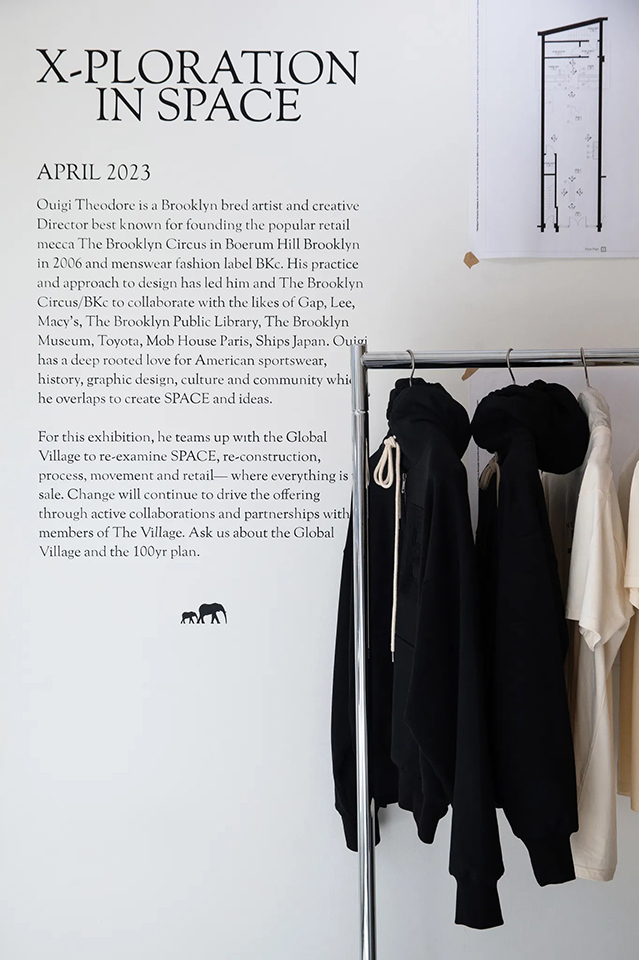
The Canal Street iteration now features Ouigi’s own art, including some pieces that are turned into or used to inspire the apparel collection. Plans are to expand into a bookstore or museum concept, as well as a school or teaching concept.
And what about wholesale?
“We’re restructuring that, for sure,” says Ouigi. “But for me, wholesale now is a shop-in-shop experience. If clothing is just hanging on a rack, you’re not getting the full story. That is what makes us that much more special. We’re looking for the right partners and plan to expand that way.”
When asked how he might explain how to build a brand to a class of retailers, Ouigi says, “I’ve never been asked that question, but I think about that every day. To come from being a multi-branded store to being ‘a brand’ and ‘a store’ is quite an evolution. It involves a lot of research, studying, and understanding your customer. It’s striking that balance between giving them what they want and what they don’t know they want. Being on the sales floor has taught me so much, and I still make it a point to spend time there.
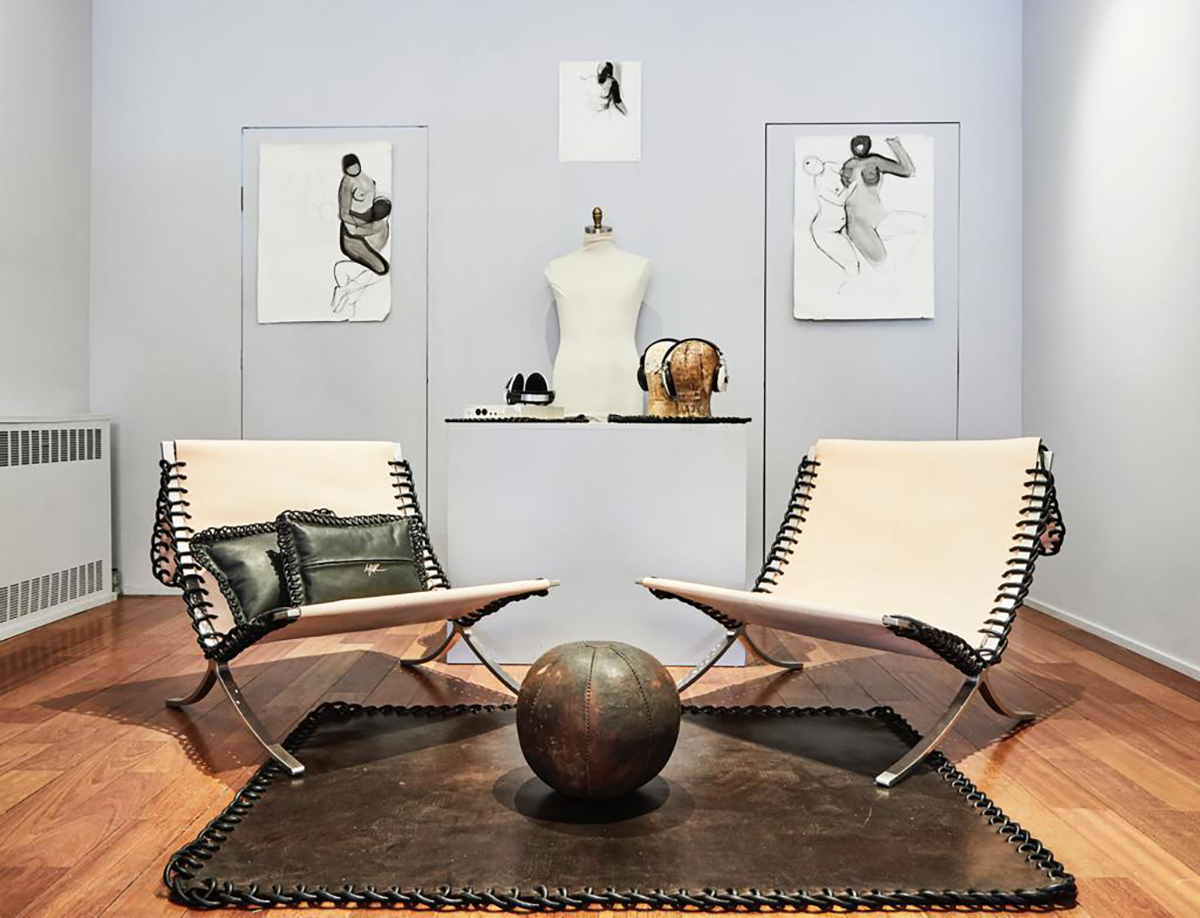
“When we first started, we were fighting over brands with other stores. My response was always, ‘We’re gonna do it in a different way.’ When another store wanted a brand that I had, I didn’t care if he was three blocks away. If a customer came to me and said I saw it over there for $20 less, I’d say, ‘Dude, that’s what they do.’ But I got to the point where I asked myself why I was wrestling with these folks.
“Since I was a graphic designer, I created a small collection of T-shirts and put them out on the floor. One day a Japanese customer walked in and bought pretty much the whole inventory. These guys started coming with empty suitcases, paying cash, buying T-shirts, and going back to Japan. Why? Because Brooklyn was a state of mind, a way of looking at things: it wasn’t just about putting Brooklyn on your chest. It’s a Spike Lee movie, the Caribbean Day Parade, the Brooklyn Museum, the Botanical Gardens, and Prospect Park.
It was about finding the essence of the brand. I knew that I had to figure out what was going on in Japan, so I started going there and started seeing, yes, multi-branded stores, but places like United Arrows and Beams where the store was just as important as the product that was in the store. So we want to ultimately phase out all the other brands and make the store itself the most important brand. We started to build the product around that.
“So make sure that you really understand your point of difference. It’s a team uniform. It’s the right smell. It’s the right sound. All these things make you want to experience the store itself and say, ‘I want a souvenir of that store.’ Brand A, B, or C is not a souvenir of the store. I could have gotten that anywhere. But the store itself becomes the experience. We kept designing our collections according to how we bought and then we started inviting brands to sit next to the store brand and vice versa. More people came for that and then we didn’t have to fight for brands. We didn’t have to worry about folks discounting things.
Looking ahead, Ouigi thinks our industry needs to expand.
“When the industry shifted to the idea of collaboration—and sometimes you think there’s too much of it—but moving beyond just making a product with both of our labels on it to looking at stores like Comme des Garçons, Dover Street Market or 10 Corso Como, where the concept of collaboration is their essence. My dream is to have a series of satellite stores with collaboration at the very heart. So when the industry introduced that concept, we were doing something right.”
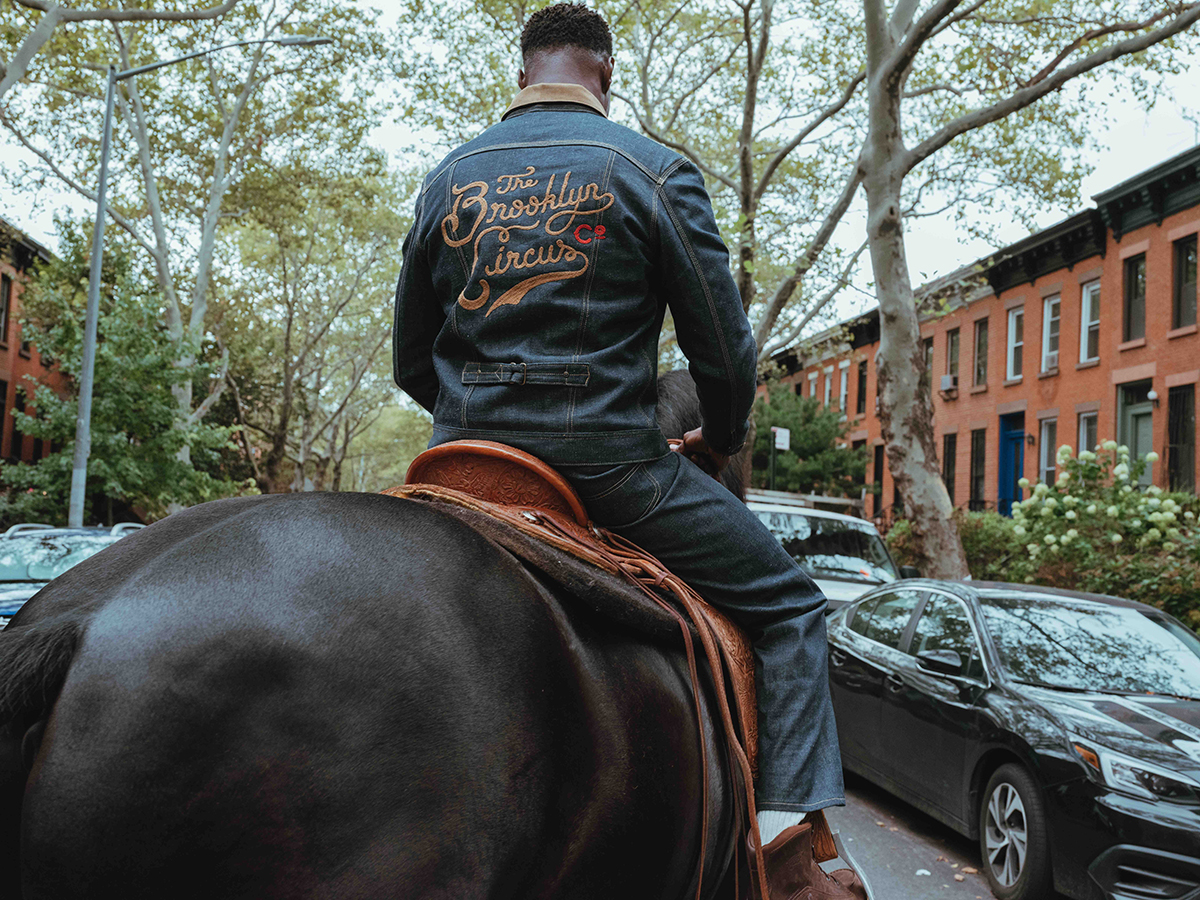
What are we doing wrong?
“Financing. I’ve self-funded this business. I’ve had great mentors like Sam Ben-Avraham and Sharifa Murdock, who are not investors but who saw my vision and allowed me to curate a section at Liberty Fairs. But folks like that are few and far between. The old guard stays on one side, and the new generation stays on the other. I think there’s a big divide between the design schools and what actually happens after graduation, where they’re just left to figure it out. I’m a big advocate of youth culture and of the old guard, the people who paved the way. Ultimately I want to be able to find and fund talent.
In talking about who The Brooklyn Circus customer is now, Ouigi talks about some of the people who come through the door. “A guy walked in yesterday, and he is from Milwaukee. He’s here to see a show. And he’s an older, middle-aged, tall white guy who comes in and says, ‘ I love your stuff.’ I look at him and can see, yeah, it makes sense. He has great taste. He appreciates the theater and the arts. But if there’s an event here in the store, you might not see him, but you might see some cool kids. Ethan Hawke and his wife stopped in the other day, and they remembered us from the store in Brooklyn. I realized early with The Brooklyn Circus and even with the previous store that when you give good service, sell quality product, and create a quality environment, you’re going to attract people of all races, ages, and genders who appreciate luxury. They’re all coming from different places, but converge on what they love, and they appreciate being recognized.
INDUSTRY ACCOLADES
Before I could describe Ouigi’s contributions to this industry, I could feel them. From the emotion that came over me when I walked into his store for the first time to working alongside him at Liberty Fairs, I’ll never forget how obvious it was that he had something special to bring to the table, even before the table was brought into the room. —Sharifa Murdock, Kith
“Ouigi always told me that to run a successful business, you need to ‘balance art and commerce.’ Ouigi’s goal was to always bring all talent under one tent, ‘The Brooklyn Circus.’
“Conceptualizing the Lee x BKc collaboration was very exciting as we worked to blend western and workwear with urban sophistication while keeping the integrity of each. Every detail, from the Japanese selvedge denim to the Melton wool fabric and exclusive patterns and palettes, twists these two stories together. The final result is a unique collection that makes you say, ‘Wow, this is so new and fresh.’” —Sedgwick Cole Jr., Lee
“In the face of conformity, Ouigi Theodore’s unique approach to design and creativity has been a source of inspiration and motivation for more than 17 years. His innovative approach to retail has truly set him apart, and I am thrilled to see him being recognized as Retail Brand of the Year. Congratulations to Ouigi and The Brooklyn Circus on this well-deserved achievement.” — Carrie Campbell, A Supreme Agent, Birkenstock


